My recent trip to Japan included a morning at The University of Tokyo’s Koishikawa Botanical Garden.
The garden got its start as a medicinal herb garden in 1684 when it was established by the Tokugawa Shogunate (learn more here). Today it’s a research facility with 4000 species in the living collection, 20,000 books, and 1,000,000 specimens in the university herbarium.
We came for the gardens.
I didn’t know about Koishikawa – or that it’s a short taxi ride from Ueno Park – until my good friend and bonsai grower Dylan suggested we visit. I was glad we did!
The first tree that caught our attention was an old ginkgo. The branches grew mostly upward, but the overall form isn’t one I’ve seen in ginkgo bonsai.
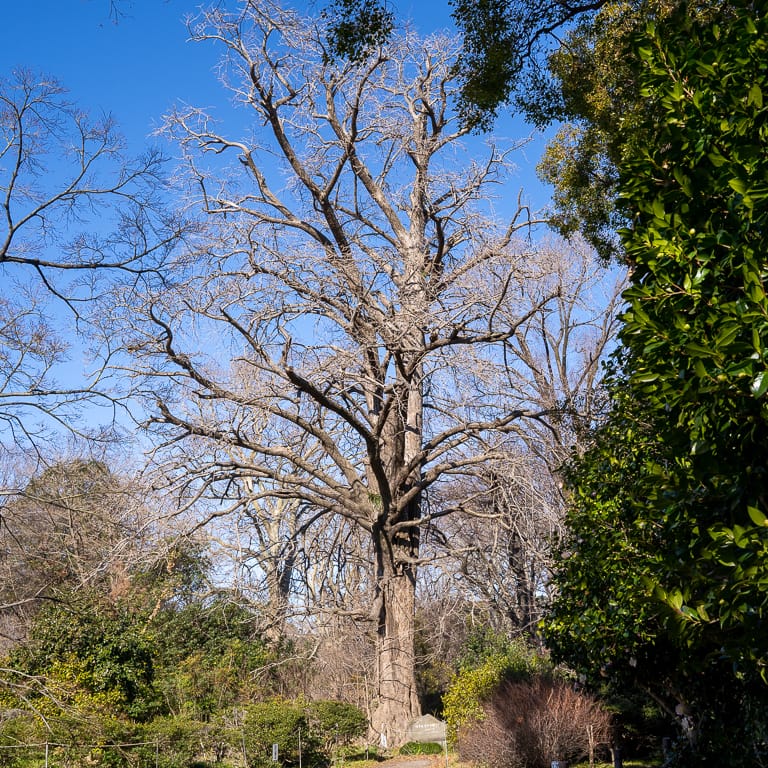
Ginkgo biloba (“icho” in Japanese)
Just past the ginkgo is a stand of trees with a giant zelkova in the middle (the one with the fine twigs and round silhouette).
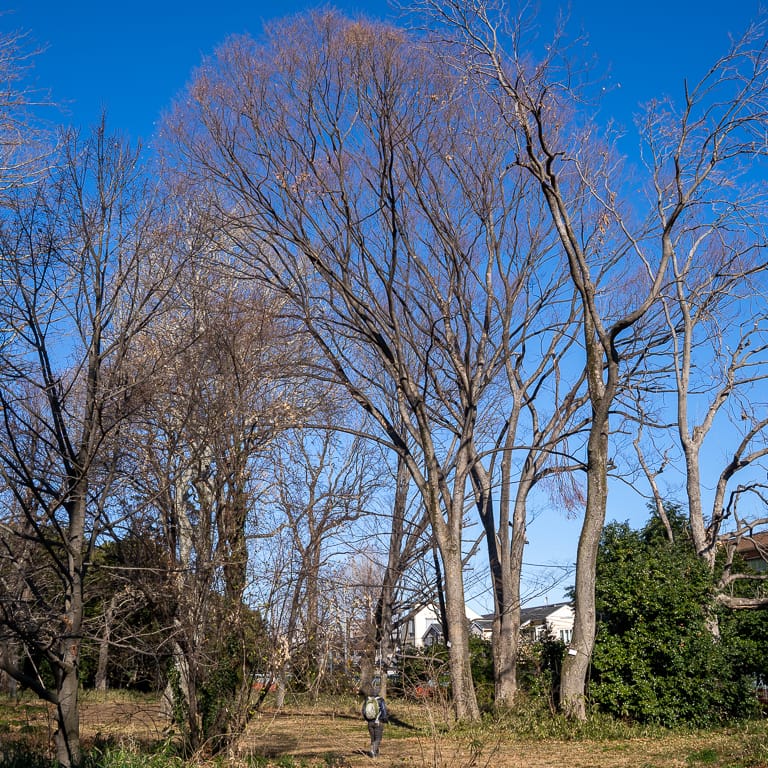
Zelkova serrata (“keyaki”) – see Dylan for scale
The zelkovas we saw had some of the smoothest branching patterns of any species in the garden. At the opposite end of the spectrum, we found a crape myrtle with quite twisty branching.
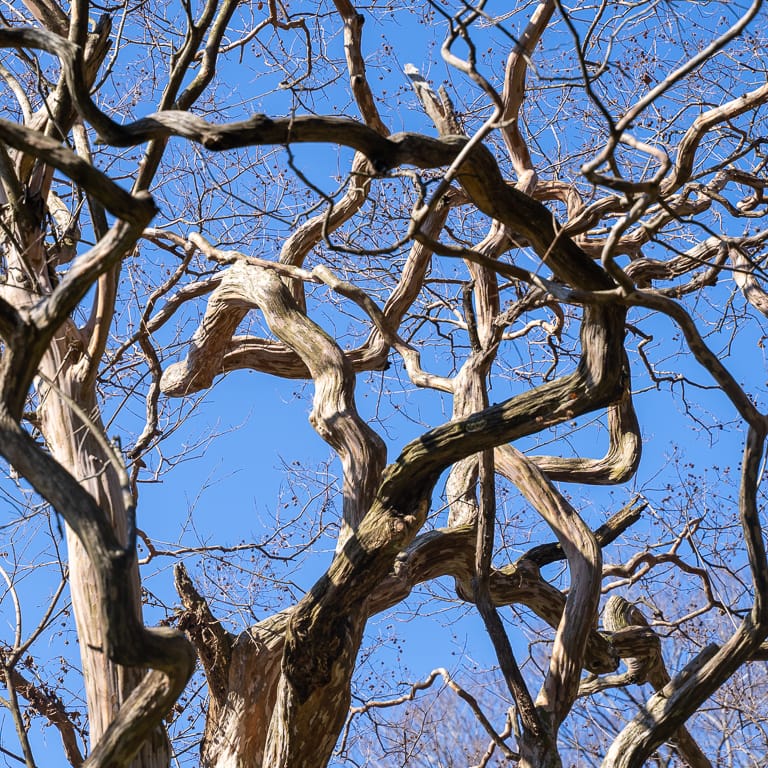
Crape myrtle branches (“sarusuberi”)
The most familiar branch patterns belonged to the Japanese maples in the garden.
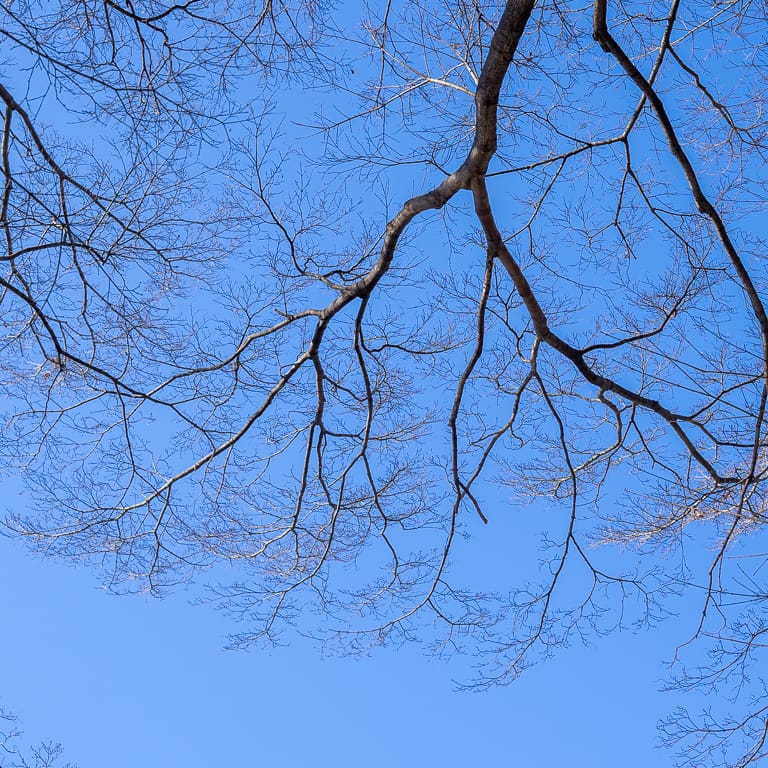
Japanese maple branches
The one maple that offered a good silhouette was the old tree below. It’s a perfect example of the idea behind the phrase “coarse to fine.” The trunk is the heaviest section of the tree and the branches get smaller and smaller as they get further from the base of the trunk.
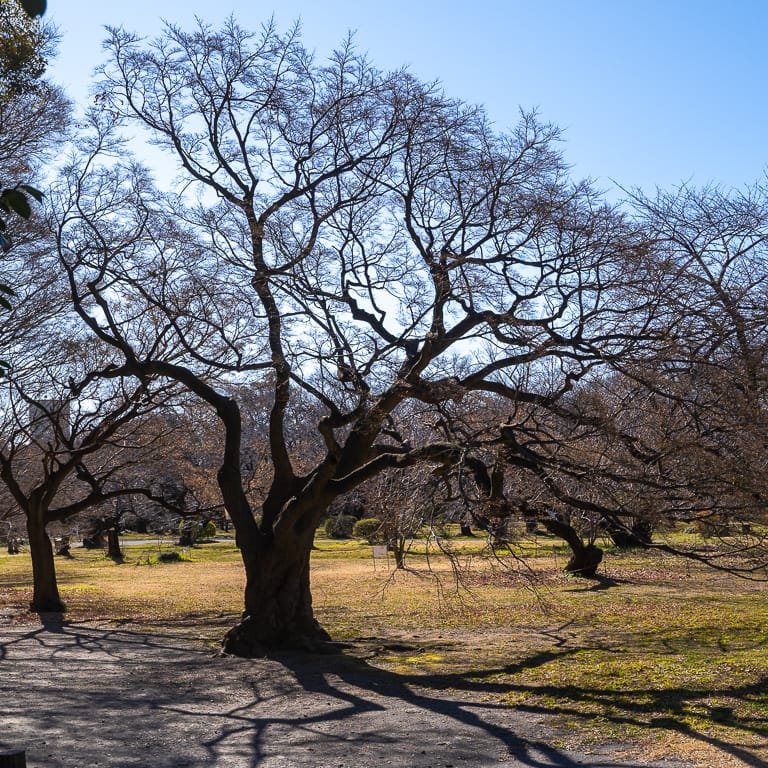
Japanese maple (“iroha momiji”)
It was also fun to see clusters of trees growing together. Can you guess the species below?
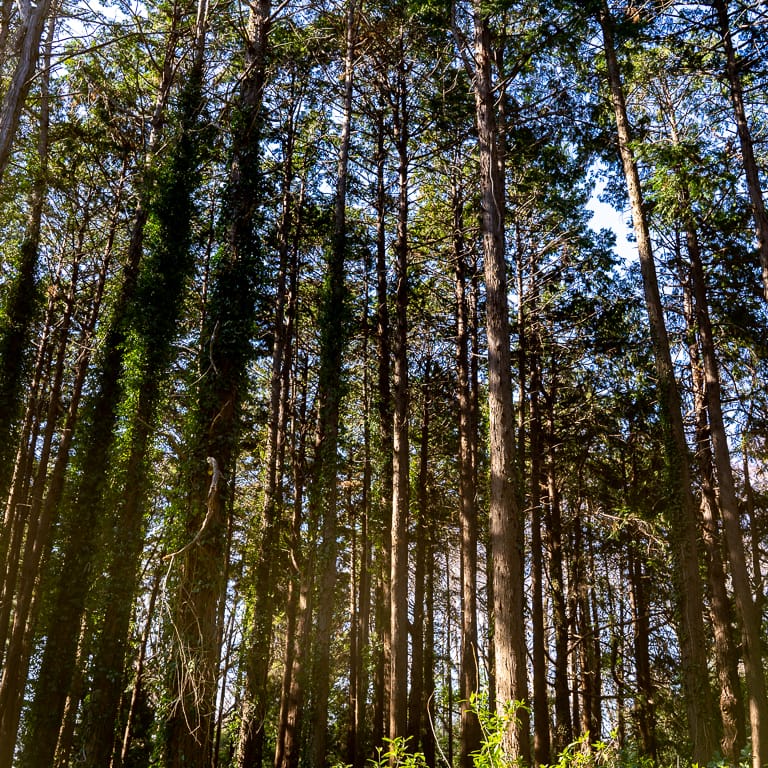
Grove of upright conifers
It’s a common species but few bonsai specimens are trained to be so tall and slender. The answer: hinoki cypress (“hinoki”).
The deciduous trees in the grove below provide a great example of what we want to achieve when we grow this species as bonsai. I expect those who are familiar with the species to recognize it instantly.
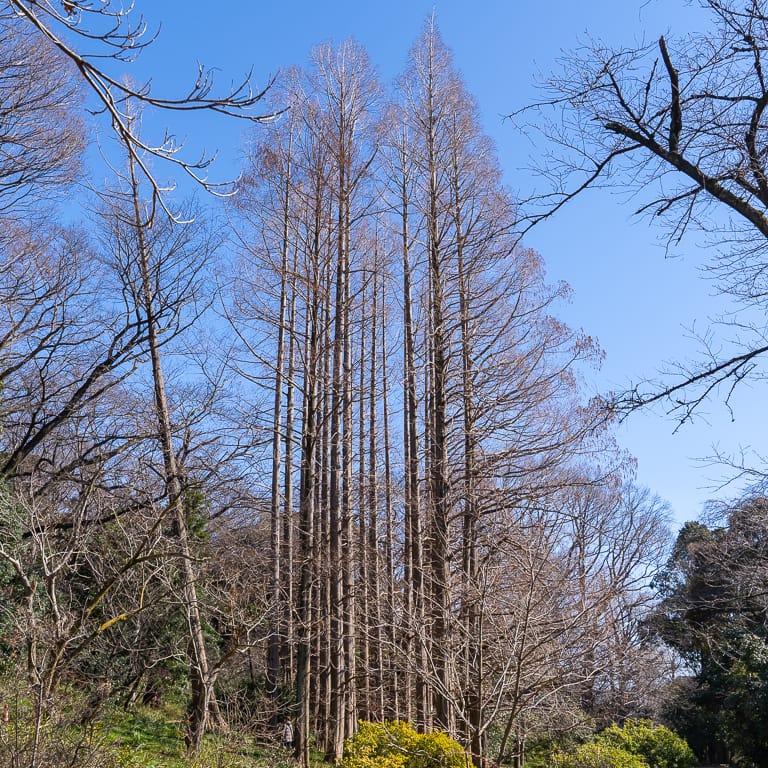
Dawn redwood (“metasequoia,” from the tree’s botanical name)
Although most of the garden is naturalistic – not tended for aesthetic purposes – Koishikawa Botanical Garden does have a beautiful display area. Here’s a taste.
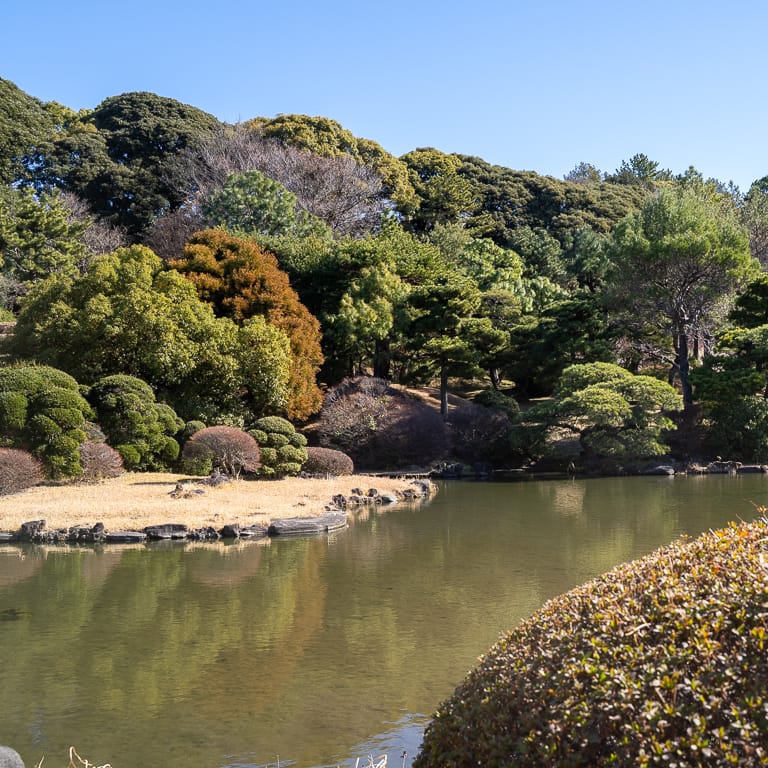
Display garden
Despite the blue sky, the weather was cold the day we visited so we had to keep moving. After walking back to Ueno Park we had time for another visit to the Kokufu exhibit as well as another exhibit that was going on at the same time. More on that in the next post!
Subscribe to Bonsai Tonight
New Posts Delivered Every Tuesday and Friday